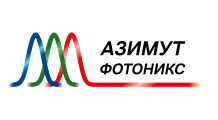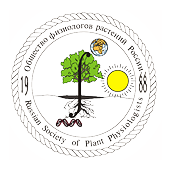Новости науки и практики // Январь 2021

Plant stem-cell organization and differentiation at single-cell resolution
Satterlee et al. isolated individual cells from the microscopic shoot apical meristem (SAM) of maize and provide single-cell transcriptomic analysis of a plant shoot meristem. This study enabled an unbiased analysis of the developmental genetic organization of the maize shoot apex and uncovered evolutionarily divergent and conserved signatures of SAM homeostasis. The fine-scale resolution of single-cell analysis was used to reconstruct the process of shoot cell differentiation, whereby stem cells acquire diverse and distinct cell fates over developmental time in wild-type and mutant maize seedlings.
https://www.pnas.org/content/117/52/33689
The dark side of the genome
Why do some plants have such large genomes? And what impact does it have?
https://www.kew.org/read-and-watch/dark-side-of-the-genome
Plant genomes: Markers of evolutionary history and drivers of evolutionary change
Plant genomes hold the key to understanding the evolutionary history of plants, a lineage that goes back nearly a billion years and contains nearly half a million living species. This history—or phylogeny—is both a record of life now past and a powerful predictive tool for both basic and applied plant science. Coupled phylogenetic and genomic studies can reveal the processes by which new species arise and go extinct, and phylogenies can guide our efforts to improve crop plants, discover new medicines, and develop effective conservation strategies.
https://nph.onlinelibrary.wiley.com/doi/10.1002/ppp3.10159
Molecular oxygen as a signaling component in plant development
While traditionally hypoxia has been studied as a detrimental component of flooding stress, the last decade has flourished with studies reporting the involvement of molecular oxygen availability in plant developmental processes. Moreover, proliferating and undifferentiated cells from different plant tissues were found to reside in endogenously generated hypoxic niches. Thus, stress‐associated acute hypoxia may be distinguished from constitutively generated chronic hypoxia. Weits et al. review recent findings regarding oxygen‐regulated development, and discuss outstanding questions that spring from these discoveries.
https://nph.onlinelibrary.wiley.com/doi/10.1111/nph.16424
Cortical tension overrides geometrical cues to orient microtubules in confined protoplasts
Colin et al. used microfabricated wells to confine and deform wallless plant cells in a controlled way to analyze the response of microtubules to cell geometry and surface tension. They demonstrate that microtubules align with cell geometry by default, whereas when surface tension increases (e.g. when turgor pressure increases), they align with the direction of maximal tension. Not only does this explain many observations in plant tissues, but it also provides a simple mechanism at the core of plant morphogenesis, in which microtubules can spontaneously align with tension, in a typical self-organized system.
https://www.pnas.org/content/117/51/32731.abstract
Gene expression data support the hypothesis that Isoetes rootlets are true roots and not modified leaves
Rhizomorphic lycopsids are the land plant group that includes the first giant trees to grow on Earth and extant species in the genus Isoetes. Two mutually exclusive hypotheses account for the evolution of terminal rooting axes called rootlets among the rhizomorphic lycopsids. One hypothesis states that rootlets are true roots, like roots in other lycopsids. The other states that rootlets are modified leaves. Hetherington et al. test predictions of each hypothesis by investigating gene expression in the leaves and rootlets of Isoetes echinospora.
https://www.nature.com/articles/s41598-020-78171-y
Tissue-specific transcriptome profiling of the Arabidopsis inflorescence stem reveals local cellular signatures
Shi et al. provide gene expression profiles of the mature inflorescence stem of Arabidopsis thaliana covering a comprehensive set of distinct tissues. By combining fluorescence-activated nucleus sorting and laser-capture microdissection with next generation RNA sequencing, they characterized the transcriptomes of xylem vessels, fibers, the proximal and distal cambium, phloem, phloem cap, pith, starch sheath, and epidermis cells. Our analyses classified more than 15,000 genes as being differentially expressed among different stem tissues and revealed known and novel tissue-specific cellular signatures.
https://academic.oup.com/plcell/advance-article/doi/10.1093/plcell/koaa019/6017181
Functional innovations of PIN auxin transporters mark crucial evolutionary transitions during rise of flowering plants
Flowering plants display the highest diversity among plant species and have notably shaped terrestrial landscapes. Nonetheless, the evolutionary origin of their unprecedented morphological complexity remains largely an enigma. Zhang et al. show that the coevolution of cis-regulatory and coding regions of PIN-FORMED (PIN) auxin transporters confined their expression to certain cell types and directed their subcellular localization to particular cell sides, which together enabled dynamic auxin gradients across tissues critical to the complex architecture of flowering plants.
https://advances.sciencemag.org/content/6/50/eabc8895.full
Systematic characterization of gene function in a photosynthetic organism
Using a barcoded mutant library of the model eukaryotic alga Chlamydomonas reinhardtii, Vilarrasa-Blasi et al. determined the phenotypes of more than 58,000 mutants under more than 121 different environmental growth conditions and chemical treatments. 78% of genes are represented by at least one mutant that showed a phenotype, providing clues to the functions of thousands of genes. Mutant phenotypic profiles allow them to place known and previously uncharacterized genes into functional pathways such as DNA repair, photosynthesis, the CO2-concentrating mechanism, and ciliogenesis. They illustrate the value of this resource by validating novel phenotypes and gene functions, including the discovery of three novel components of a defense pathway that counteracts actin cytoskeleton inhibitors released by other organisms.
https://www.biorxiv.org/content/10.1101/2020.12.11.420950v1
Seed heteromorphism, an adaptive trait of desert plant species
What are the effects of genetic and environmental factors on seed heteromorphism and its variations?
https://www.botany.one/2020/11/seed-heteromorphism-an-adaptive-trait-of-desert-plant-species/
Plant carbohydrate depletion impairs water relations and spreads via ectomycorrhizal networks
Sapes et al. connected well‐watered Pinus ponderosa seedling pairs via ectomycorrhizal (EM) networks where one seedling was shaded (D) and the other kept illuminated (LD) and compared responses to seedling pairs in full light (L). They measured plant NSC, osmotic and water potential, and transfer of 13CO2 through EM to explore mechanisms linking stored NSC to plant water balance regulation and identify potential tradeoffs between plant water retention and EM fungi under carbon‐limiting conditions.
https://nph.onlinelibrary.wiley.com/doi/10.1111/nph.17134
The chromatin will never forget
A chromatin-based, RNA interference (RNAi)-independent mechanism re-establishes DNA methylation on heterochromatic transposable elements that lost silent marks in previous generations.
https://www.nature.com/articles/s41477-020-00803-y
Of clocks and coenzymes in plants: intimately connected cycles guiding central metabolism?
Metabolite rhythms are driven by enzymes, a major proportion of which rely on organic coenzymes to facilitate catalysis. The B vitamin complex is the key provider of coenzymes in all organisms. Emerging evidence suggests that B vitamin levels themselves undergo daily oscillations in animals but has not been studied in any depth in plants.
https://nph.onlinelibrary.wiley.com/doi/10.1111/nph.17127
In plants, channels set the rhythm
Like animals, plants have 'molecular switches' on the surface of their cells that transduce a mechanical signal into an electrical one in milliseconds.
http://www.cnrs.fr/en/plants-channels-set-rhythm
A plant immune receptor: It takes four to tango
Although separated by millions of years of evolution, plants and animals have independently alighted upon similar innate immune strategies to protect themselves against microbial infection. In both kingdoms of life, immune receptors called nucleotide-binding/leucine-rich-repeat (NLR) proteins form an important layer of defense inside cells against pathogen attack. Based on distinct structural and signalling features, plant NLRs are divided into two main classes: those that contain coiled-coiled (CC) modules (CNL proteins) and those that harbour Toll/interleukin-1 receptor/resistance (TIR) modules (TNL proteins).
https://www.eurekalert.org/pub_releases/2020-12/mpif-api112620.php
Hormonal cues in plants and animals
Researchers have uncovered one way plants respond to hormonal cues. A similar process is likely at play in mammals.
https://www.sciencedaily.com/releases/2020/12/201207153934.htm
Target enzymes for improved photosynthesis
In recent years, huge efforts have been made in identifying the enzymes that limit photosynthesis. Enzymes that exert a high level of control over fluxes can be used as engineering targets to enhance photosynthesis. Yet, while over-expression of some target enzymes, such as Sedoheptulose-1,7-bisphosphatase (SBPase), have been shown to enhance photosynthesis in vitro, both over– and under-expression of the target enzyme transketolase decreased photosynthetic rate.
https://www.botany.one/2020/12/target-enzymes-for-improved-photosynthesis/
Новости
Новости науки и практики // Апрель 2024
Обзор научных новостей, опубликованных во всемирной паутине за последний месяцФосфорилирование плазматической мембраны H+-АТФазы Thr881 (треонин) участвует в светоиндуцированном открывании устьиц
Ученые из Университета Нагои (Nagoya University) и Института трансформирующих биомолекул (WPI-ITbM) обнаружили новый ...Научная конференция «Photosynthesis and Hydrogen Energy Research for Sustainability – 2024»
Приглашаем Вас принять участие в XII международной научной конференции


Объявления
Записей не найдено.



